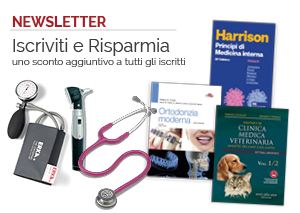Low Flow Anaesthesia - The Theory and Practice of Low Flow - Minimal Flow and Closed System Anaesthesia
di Baum - Nunn • 2000 • dettagli prodotto
€
88,79

DESCRIZIONE
Now there is greater awareness and interest in these techniques, with more highly advanced anaesthetic machines available, and anaesthestists being more under pressure to be economical with anaesthetic gases.This comprehensive guide to the equipment used and the implementation of techniques in clinical practice has been revised throughout, bringing it up to date with the advances in technology and gases since publication of the first edition.This book will be an essential purchase for both the trainee and the experienced anaesthetist who will benefit from the author's expertise, giving them the confidence to incorporate these techniques into their own practice. It also will serve as a reference book for medical engineers and technicians. Table of Contents: BREATHING SYSTEMS - TECHNICAL CONCEPTS AND FUNCTION: Classification of breathing systems according to underlying technical concepts; Classification of breathing systems in accordance with functional criteria; Breathing systems according to technical and functional aspects; Function of breathing systems in relation to the fresh gas flow; Advantages and disadvantages of the different breathing systems; REBREATHING SYSTEMS - THE DEVELOPMENT OF A TECHNICAL CONCEPT: Development of breathing systems - historical perspective; The development of semi-closed use of circle absorption systems - considerations on the current situation; PHARMACOKINETICS OF ANAESTHETIC GASES: Oxygen; Nitrous oxide; Volatile anaesthetics; Total gas uptake; ANAESTHETIC METHODS WITH REDUCED FRESH GAS FLOW: Low flow anaesthesia; Minimal flow anaesthesia; Closed system anaesthesia; CONTROL OF INHALATIONAL ANAESTHESIA: Computer simulation programs; Control of inhalational anaesthesia; Characteristics of anaesthesia management as a function of fresh gas flow; Rules on anaesthetic management; ADVANTAGES OF THE REBREATHING TECHNIQUE IN ANAESTHESIA: Reduced consumption of anaesthetic gases; Reduced costs; Reduced environmental pollution; Improved anaesthetic gas climate; Extended potentials of patient monitoring and improved knowledge of machine functions; TECHNICAL REQUIREMENTS FOR ANAESTHESIA MANAGEMENT WITH REDUCED FRESH GAS FLOW: Technical regulations and standards; Technical requirements for the anaesthetic equipment with respect to the extent of fresh gas flow reduction; Specific features of different anaesthetic machines; Anaesthetic machines with electronically controlled gas delivery systems; Implications for anaesthetic practice; MONITORING: Technical regulations: safety facilities for inhalation anaesthetic machines; Main- and side-stream gas analysers; Measurement of oxygen concentration; Measurement of volatile anaesthetic concentration; Measurement of nitrous oxide concentration; Measurement of carbon dioxide concentration; Multi-gas analyzers; PATIENT SAFETY ASPECTS OF LOW FLOW ANAESTHESIA: Specific risks of anaesthetic techniques with reduced fresh gas flow; Specific safety features of anaesthetic techniques with reduced fresh gas flow; Implications for anaesthetic practice; Contraindications for low flow anaesthetic techniques; LOW FLOW ANAESTHESIA IN CLINICAL PRACTICE: Maintenance of the equipment; Practice of low flow anaesthesia with halothane, enflurane and isoflurane; Practice of low flow anaesthesia with desflurane and sevoflurane; Gas volume deficiency; Water condensation within the hosing; Economy and efficiency; The laryngeal mask airway; Paediatric anaesthesia; Low flow anaesthesia in cases of short duration (day-case surgery); LOW FLOW ANAESTHETIC TECHNIQUES WITHOUT NITROUS OXIDE: The routine use of nitrous oxide as carrier gas - pros and cons; Inhalation anaesthesia without nitrous oxide - general considerations with special respect to low flow anaesthetic techniques; Low flow anaesthetic techniques without nitrous oxide - clinical practice; Economics of low flow anaesthetic techniques without nitrous oxide; Are there any specific indications for the use of nitrous oxide?; FUTURE PERSPECTIVES: Future technical developments; Environmental protection and occupational health and safety; Future inhalational anaesthetics; Improvements in patient care; Conclusions
DETTAGLI PRODOTTO torna su
ISBN: 9780750646727
Titolo: Low Flow Anaesthesia - The Theory and Practice of Low Flow - Minimal Flow and Closed System Anaesthesia
Autori: Baum - Nunn
Editore: Elsevier - Butterworth - Heinemann
Volume: Unico
Edizione: IV 2000
Lingua: Inglese
Finitura: Copertina flessibile
Misure: 21x27 cm
Pagine: 303
Peso: 0.8 kg
RECENSIONI
NESSUNA RECENSIONE PER QUESTO PRODOTTO



























